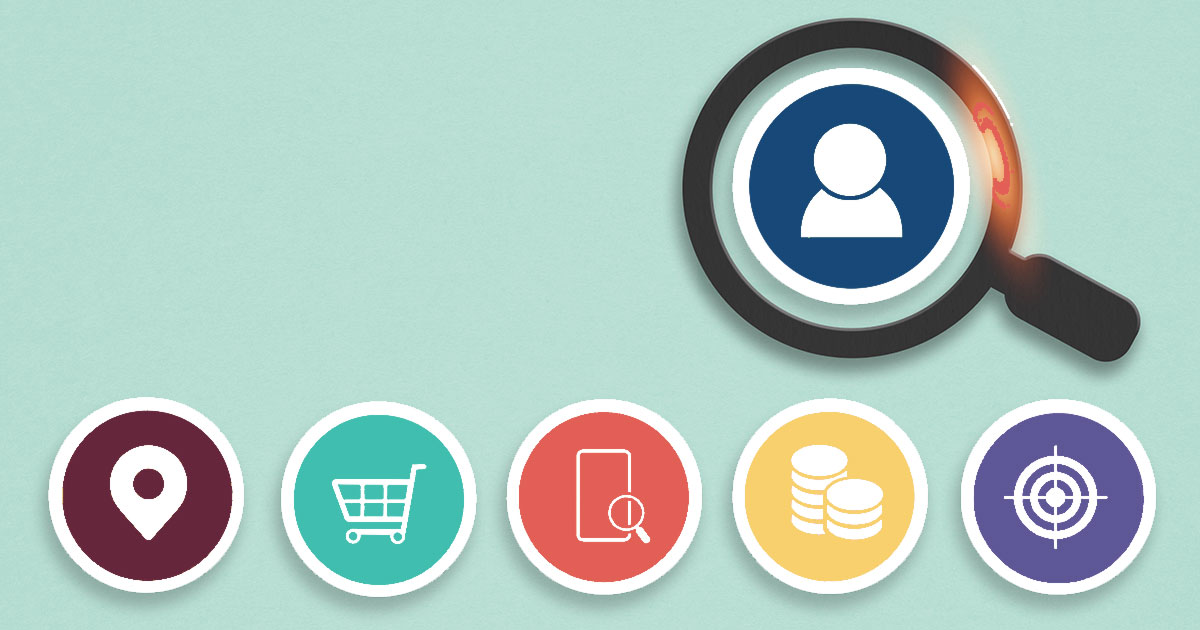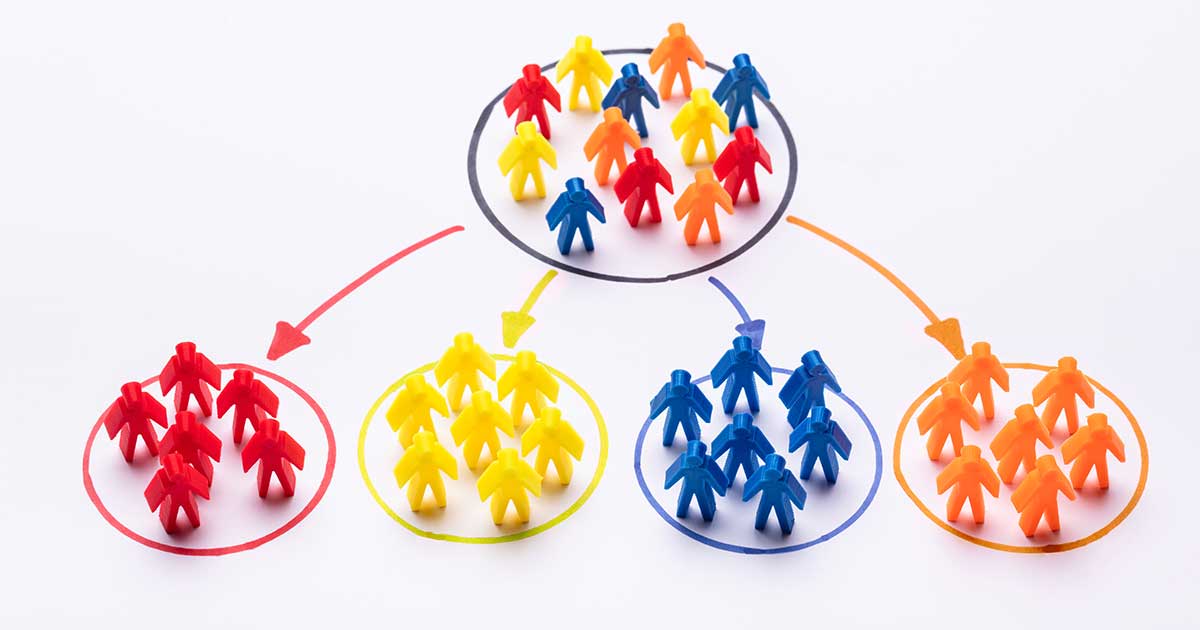Welcome to a comprehensive guide on building your buyer personas!
In today’s digital age, understanding your target audience is crucial for effective marketing strategies. In fact, buyers are 48% more likely to consider a purchase when the marketing is personalized to their needs!
By creating well-defined buyer personas, you gain valuable insights that help you tailor your campaigns, target your ads more efficiently, and ultimately achieve better results and return on investment (ROI).
This blog will walk you through the step-by-step process of building your buyer personas, exploring various elements such as social media data, social listening, market research, competitor analysis, and more. Let’s dive in!
Step 1: Research Your Target Market Online
Building accurate buyer personas starts with researching your target market.
Begin by using digital tools to gather information from various sources. Use tools like Google Analytics, CRM databases, and social media platforms to collect data, customer feedback, and website analytics.
Analyzing this initial research will enable you to define your buyer personas and influence the type of content you should create.
Step 2: Conduct Traditional Market Research
Conducting market research provides you with a broader perspective on industry trends, customer behaviors, and market demands.
Utilize surveys, interviews, and questionnaires to gather information directly from your existing customers or potential leads. Ask probing questions to uncover their motivations, goals, and pain points.
To gain a competitive edge, analyze your competitors’ audiences as well. Identify who they are targeting and how they position themselves online. Explore their social media channels, website content, and advertising campaigns.
By understanding their audience and how they communicate with them, you can identify potential gaps and differentiate your brand effectively.
Step 3: Identify Demographic Information
Identify common demographics, such as age, location, language, gender, income, education, and employment. Look for trends in your customer data that can lead you to better understand their behavior.
Demographic information is instrumental in targeting your marketing efforts effectively. But it shouldn’t stop there. You should also weigh psychographics like values, interests, and opinions as these play major factors in what drive someone to engage.
Step 4: Examine Online Behavior
Identify their buying behavior, such as online vs offline, how they use your products/services, what motivates them to make purchases, how frequently they buy, their preferred channels, etc.
Ask questions like:
- What are the digital habits of your customers?
- Which websites do they frequent?
- Which social media platforms do they use and how do they engage with them?
- What are their online purchasing behaviors?
- Uncover their pain points, motivations, and preferences.
This knowledge will help you create personas that resonate with your target audience.
Step 5: Engage in Social Listening
Social listening is an invaluable tool for understanding your customers on a deeper level. In fact, 82% of businesses claim social listening as a key component of their digital strategy. It allows you to track the sentiments expressed by your audience in real time.
Monitor conversations on social media platforms related to your industry, brand, product, or targeted SEO keywords. Pay attention to what your target audience is discussing, the language they use, and the challenges they face.
By listening attentively, you gain insights into your ideal audience’s needs, interests, and concerns, which will assist in your persona creation process, leading to better-performing content.
Step 6: Identify Goals and Motivations
What drives your customers? This could be personal or professional goals. If you know what motivates them, you can frame your product or service as a way to help them achieve these goals.
Are they seeking information, connection, entertainment, or something else? Aligning your digital marketing strategy with your customers’ online goals can make your efforts more effective.
You can also use this information to determine the type of content your audience prefers. For example, some demographics may prefer video over text or long-format articles over short text.
Determine what types of content are performing best among your audience and create content that fits, provides value, and sparks engagement.
Step 7: Outline Communication Preferences
Do your customers prefer email communication? Are they more likely to engage with you via social media or live chat? Understanding these preferences can help you get the right message to the right people at the right time.
Be sure to note what your audience is saying online and the feedback they give to other brands in your niche. If you see your audience expressing a need, strategize how your brand can fulfill it.
Step 8: Identify Commonalities and Create Detailed Personas
After gathering and analyzing data, it’s time to identify commonalities and create your buyer personas and backstories.
Look for patterns in demographics, behaviors, and preferences. Group your target audience into segments based on these similarities. For each segment, develop a detailed persona that embodies their characteristics, motivations, goals, and pain points.
Give each persona a name and a backstory to make them relatable. And feel free to get creative! The more detailed you make the backstory, the more you’ll understand your audience, and in turn, the audience will be even more likely to engage as they will truly feel seen.
Step 9: Segment Your Digital Marketing Efforts
Use your personas to guide your digital marketing efforts. Segment your email marketing, customize your social media messaging, personalize your content, and target your SEO efforts to match the preferences and habits of each persona.
Segmenting your personas will allow you to obtain more data about your audience’s preferences and will help provide valuable insights into which types of content perform best with specific segments.
Step 10: Analyze and Refine
Digital marketing is always evolving, so your personas should too. Use A/B testing, track KPIs, and continue to gather data about your customers to refine your personas and ensure they’re guiding you toward the most effective digital marketing strategy.
Why Buyer Personas are an Essential Part of Your Digital Marketing Strategy
Defining your buyer personas is a crucial element of your digital marketing strategy. Here are just a few reasons why:
- Targeted Advertising: Buyer personas provide you with a deep understanding of your audience’s needs and preferences. This knowledge helps you create highly targeted ads that resonate with your potential customers, increasing the chances of conversions and engagement.
- Tailored Content: With well-defined personas, you can tailor your content specifically to address your audience’s pain points and provide solutions. This personalized approach establishes trust and positions your brand as an authority in their eyes.
- Better ROI: By targeting the right audience with precision, you avoid wasting resources on irrelevant demographics. This leads to improved ROI as you optimize your advertising budget and focus on those who are most likely to convert.
Drive Marketing Success With Buyer Personas
Building buyer personas is an essential practice for marketing professionals seeking to drive impactful campaigns. By investing time and effort into understanding your target audience, you can create highly targeted content marketing and ads that resonate with potential customers, resulting in better engagement, conversions, and ROI.
Remember to utilize social media data, engage in social listening, conduct market research, and analyze competitors’ audiences to develop well-defined personas.
If you need assistance or guidance in building your buyer personas or developing effective marketing strategies, don’t hesitate to contact us. As a digital marketing agency, our mission is to help you unlock the power of buyer personas and propel your marketing efforts to new heights!


